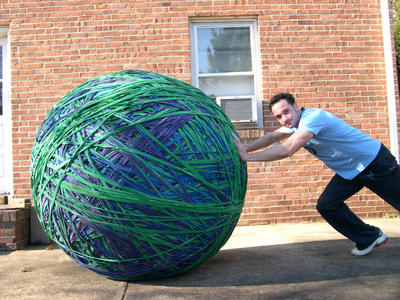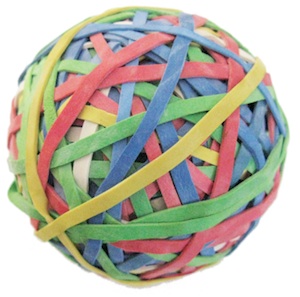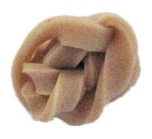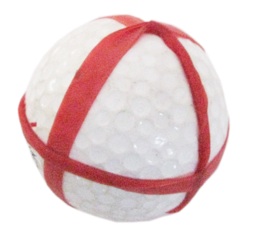Everyone needs a big bouncy ball
by Burkard Polster and Marty Ross
The Age, 16 May 2011

Here’s a great activity to engage your budding maths masters: build a rubber band ball! It’s not just a clever way to store rubber bands and do away with clutter. It’s also a great bouncy ball to assist in stress relief.
You may have seen rubber band balls in stationery shops, and currently they’re pictured on trucks zipping around Melbourne, as the OfficeMax logo. The making of commercial rubber band balls seems a closely guarded secret: no one we approached was prepared to divulge any information. We trust this reticence wasn’t to hide the fact that the balls were constructed by slaves in Third World rubber band sweatshops.
In principle, it’s easy to make your own rubber band ball (or to have your little slaving maths masters make it for you). Making one also shows how mathematically cool they are. We can think of a rubber band ball as starting as a smaller ball. Then rubber bands are applied, one at a time, as great circles. (A great circle of a ball is a largest possible circle, such as an equator or a circle of longitude).

However, there are a few problems with this picture of an emerging rubber band ball. First, it ignores the fact that you’ve somehow got to get started. Second, placing a thin rubber band around a ball is more difficult than it sounds, as it will easily slip off. Third, as your ball grows you will need longer and longer rubber bands.
Since rubber bands stretch easily, the last point is probably not a practical concern unless you get carried away. However, if you’re aiming for the world record, special rubber bands are in order: the current champion ball is two metres in diameter. This Behemoth consists of about 730,000 rubber bands and weighs about five tons.
Here are some strategies to deal with the other issues. The easiest way to begin is with a small, solid rubber ball as a core. However, this practice is frowned upon by rubber band purists. Instead, you are supposed to just bunch up a few rubber bands and get going from there.

Such a baby ball will not be beautifully symmetric. However, as you add rubber bands, it is remarkably easy to smooth things out. Once your creation is the size of a golf ball, it should be impressively spherical.
Now, how do you stop the rubber bands from slipping off? That’s actually an unsolvable problem, at least for mathematically ideal loops. A great circle is inherently unstable, so the tiniest nudge can lead it to springing out of position. (We could try something other than great circles, but anything else turns out to be worse: any other way of placing a loop on a ball doesn’t even require a nudge to start springing out of position).
However, keeping real rubber bands in place is not too difficult. It’s actually easy if the bands are the flat and wide style, or if they fit around the ball very tightly, cutting into it.
Another way to solve the slip problem for thin rubber bands, and to use long rubber bands on small balls, is to wrap them multiple times. A particularly stable and elegant method is the triple wrap pictured below. This produces three great circles meeting at right angles.

If you want to speed things along, you can wrap multiple bands simultaneously. And, to obtain longer rubber bands for bigger balls, you can tie together several shorter ones. Of course, rubber band purists frown on all of these tricks.
And that’s it! Time to send off the little maths masters to play with their new bouncy balls.
However, the work of bigger maths masters has only just begun. After all, the way rubber bands are wrapped into balls is very arbitrary. Wouldn’t it be preferable to determine how to arrange the rubber bands to give the resulting ball a beautifully symmetrical appearance? But how to do it?
Stay tuned. Next week, we’ll show you how to make a mathematically perfect rubber band ball.
Burkard Polster teaches mathematics at Monash and is the university's resident mathemagician, mathematical juggler, origami expert, bubble-master, shoelace charmer, and Count von Count impersonator.
Marty Ross is a mathematical nomad. His hobby is smashing calculators with a hammer.
Copyright 2004-∞ ![]() All rights reserved.
All rights reserved.